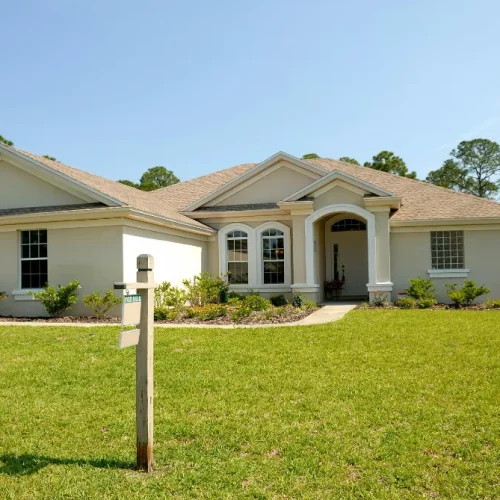
Deciding between short-term and long-term leasing in Dubai depends on lifestyle, financial goals, and how much flexibility someone needs. Short term rentals in Dubai work best for those seeking flexibility and higher income potential, while long-term leases provide stability and predictable costs. Understanding these differences helps avoid costly mistakes and ensures the choice matches personal or investment priorities.
Dubai’s property market offers both options with clear advantages. Short-term stays often appeal to tourists, business travelers, or those in transition, while long-term agreements suit families, professionals, and anyone looking for consistency. The decision comes down to weighing convenience against stability and aligning the lease with specific needs.
Key Takeaways
- Leasing options in Dubai vary based on flexibility and stability
- Choosing the right lease depends on lifestyle and financial goals
- Understanding benefits and challenges helps make an informed choice
Key Differences Between Short-Term and Long-Term Leasing in Dubai
Short-term rentals and long-term leasing in Dubai differ in contract length, tenant type, and financial outcomes. Each option carries distinct advantages and challenges that influence how a property owner approaches their rental strategy.
Lease Duration and Flexibility
Short-term rentals in Dubai usually range from a few days to several months. These agreements are not tied to Dubai’s Ejari system, giving landlords more freedom to adjust pricing and availability. This flexibility helps property owners adapt to seasonal demand, but it also means occupancy can fluctuate.
Long-term leasing typically requires a contract of one year or more, registered under Ejari. This system provides legal protection for both landlord and tenant. While less flexible, it ensures consistent occupancy and eliminates frequent turnover. The choice between flexible short stays and stable long-term agreements depends on whether the landlord values adaptability or predictability in their rental strategy.
Typical Tenant Profiles
Short-term rentals in Dubai generally attract tourists, business travelers, and individuals seeking temporary housing. These tenants expect furnished units and amenities similar to hotels, including cleaning services and utilities bundled into the rent.
Long-term rentals appeal to residents, expatriates, and families who plan to stay in Dubai for extended periods. These tenants usually provide their own furnishings and prefer contracts that offer stability and security. By aligning the property setup with tenant expectations—furnished for short stays, unfurnished or semi-furnished for long-term leasing—landlords can better meet market demand and reduce vacancy risks.
Income Potential and Rental Yields
Short-term rentals often generate higher gross rental income, particularly during peak tourism seasons. However, landlords must account for higher costs such as platform fees, frequent maintenance, and professional management services. These expenses reduce net yields, making profitability dependent on strong occupancy rates.
Long-term leasing produces steady income with fewer variable costs. Property management requirements are lighter, and landlords face fewer gaps between tenants. While the monthly rent is typically lower than short-term rates, the overall net yield can be more reliable. The decision between maximizing gross income through short stays or securing stable net returns with long-term leasing depends on the landlord’s financial goals and tolerance for operational involvement.
Factors to Consider When Choosing Your Leasing Strategy
The choice between short-term and long-term leasing depends on practical factors such as location demand, compliance with local regulations, and the level of management required. Each of these elements directly affects profitability, tenant stability, and the overall sustainability of the investment.
Location Impact on Rental Success
Location remains one of the strongest influences on rental performance in Dubai. Areas like Downtown Dubai and Dubai Marina attract high tourist traffic, making them more suitable for short-term rentals with higher nightly rates. By contrast, suburban communities such as Jumeirah Village Circle or Dubai Silicon Oasis often favor long-term tenants seeking housing stability.
Short-term leasing in prime tourist zones benefits from seasonal demand and proximity to attractions. However, occupancy rates can fluctuate, requiring flexible pricing strategies. Property investors must weigh the higher income potential against the risk of vacancies during off-peak months.
Long-term leasing in residential areas offers consistent rental income and reduced turnover. Families and professionals working in nearby business districts often prefer fixed contracts, which lowers marketing costs and vacancy risks. Investors should align their strategy with the tenant profile most common in the chosen location.
Legal and Regulatory Requirements
Leasing in Dubai requires strict compliance with rules set by the Department of Economy and Tourism (DET) and Dubai Tourism. Short-term rentals must be licensed, with property owners registering their units to operate legally. Failure to comply can result in fines or restrictions on listing properties on booking platforms.
Long-term leases follow tenancy laws regulated by the Dubai Land Department. Contracts are typically registered through Ejari, ensuring legal protection for both landlords and tenants. These laws limit sudden rent increases and provide dispute resolution mechanisms.
Property investors should also consider taxation and service fees. Short-term rentals may involve tourism charges, while long-term leases often include maintenance responsibilities. Understanding these obligations helps avoid legal issues and ensures smoother operations.
Conclusion
Choosing between short-term and long-term leasing in Dubai depends on personal goals, financial priorities, and lifestyle needs. Each option offers clear trade-offs in terms of flexibility, income potential, and stability. By weighing factors such as property type, location, and regulatory requirements, individuals can align their rental strategy with both market conditions and personal objectives.













